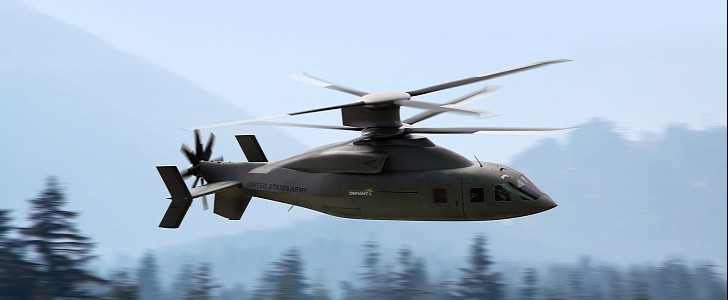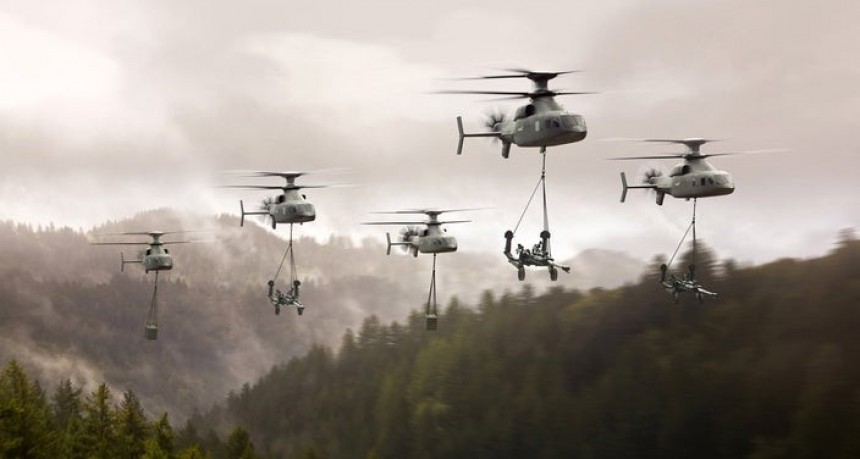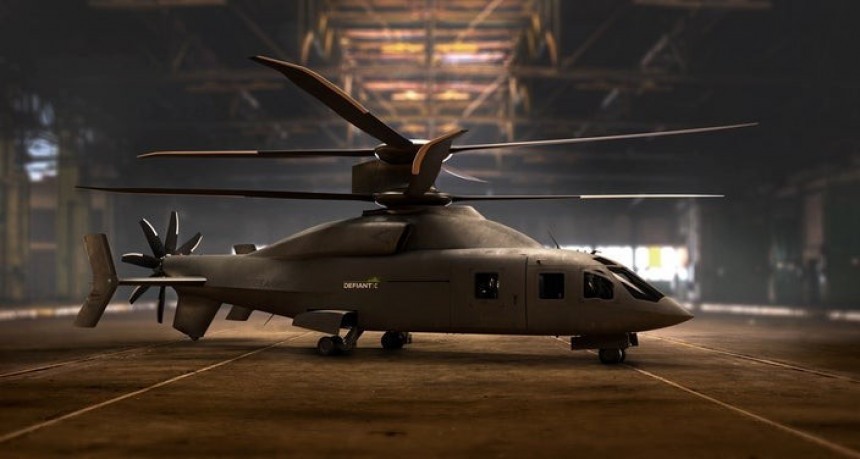The U.S. Army will have to decide which helicopter will use in the future, and the Defiant X offered by Boeing-Sikorsky has some aces up its sleeves.
When most children had a Lamborghini Countach picture on their walls, I had an awesome Aerospatiale Dauphine SA-365 C poster that adorned my dorm - that's because my dad was a flight engineer for that kind of helicopter. He took me to his unit several times, I loved the aircraft around there, and started to know them.
I still look up to the sky and know the difference between a fenestron-type and a regular tail-rotor helicopter, only by the sound. So when I saw the first pictures with the Defiant X, it blew my mind, and I showed my dad the pics, and he smiled and explained a little. While the Defiant X looks similar to an autogyro (or gyrocopter), the engine sends its power to the upper blades instead of the rear ones.
The U.S. Army relied on different versions of the good old Bell UH-1 (originally HU, hence the Huey nickname) since 1962. They fought in all the wars ever since, bringing troops to safety or deploying to the battlefield. It was fitted with weapons, improved, and transformed into an attack helicopter, but one thing it couldn’t do was to carry too many troops or stretchers. For that job, the Sikorsky UH-60 Black Hawk was a much better choice starting with 1971. But with all the improvements and upgrades, its time is gone and, even if it is still good nowadays, it won’t be in the near future.
It is time for a new era, and Lockheed-Martin joined forces with Boeing to build a next-generation aircraft: the Defiant X. Any Star Trek fan would recognize the name Defiant as the most powerful Starfleet starship (in Deep Space 9). This new aircraft tries to live up to its name and propose a completely different approach than other helicopters.
For starters, it comes with a coaxial rotor system (or twin rotor), the likes of which are used by most Kamov helicopters. Worth mentioning that the Kamov KA-32 aircraft could lift up to 5 metric tons (11,023 lbs) back in the ‘70s. It is still currently used as a highly effective firefighter aircraft in many countries, including Canada. Defiant X’s twin-rotor diameter is similar in size to the one that equips the UH-60, but has more lifting power and, thanks to its rear propeller, a higher speed. Usually, twin-rotor helicopters can’t travel too fast, but this is different.
Lockheed-Martin claims that the maximum speed is above 230 knots (265 mph or 426 kph). Considering that its civilian brother Sikorsky X2 achieved 299 mph (481 kph), it is not an overestimated statement. By comparison, the well-known AH-64 Apache can reach up to 182 mph (293 kph) in certain conditions.
On the other hand, Bell Helicopters offers an alternative with an upgraded, reworked version of its tilt-rotor aircraft Osprey, named Bell V-280 Valor. It is true that it is faster than the Defiant X and (allegedly) can carry more. Still, it is more of an airplane with vertical take-off and landing (VTOL) capability than a helicopter and requires a wider landing area, but it is shorter from nose to tail. But since the U.S. Army has its own agenda and knows what it’s best for them, the civilian helicopter industry will benefit from this advanced design system proposed by the Boeing-Sikorsky alliance (actually Boeing-Lockheed Martin).
Lockheed-Martin and Boeing designed the Defiant X to compete for U.S. Army’s Future Long-Range Assault Aircraft (FLRAA) program. Speed, maneuverability, payload, and handling qualities will be some of the decisive factors. But things are going painfully slow, and the health crisis doesn't make things easier. The final decision will be taken in 2022, with the winner entering in service in 2030.
As for the former Aerospatiale helicopter maker I enjoyed as a kid, that company was integrated into Airbus Helicopters (part of the Airbus Industrie) and continues to build updated and reworked Dauphines and, for Long-Range aircraft, the Super Puma. Both of them are connected to older models, with trustworthy technologies. They are working on the Future Transport Helicopter (FTH) program which will deliver a chopper that could compete against the Boeing CH-47 Chinook.
I still look up to the sky and know the difference between a fenestron-type and a regular tail-rotor helicopter, only by the sound. So when I saw the first pictures with the Defiant X, it blew my mind, and I showed my dad the pics, and he smiled and explained a little. While the Defiant X looks similar to an autogyro (or gyrocopter), the engine sends its power to the upper blades instead of the rear ones.
The U.S. Army relied on different versions of the good old Bell UH-1 (originally HU, hence the Huey nickname) since 1962. They fought in all the wars ever since, bringing troops to safety or deploying to the battlefield. It was fitted with weapons, improved, and transformed into an attack helicopter, but one thing it couldn’t do was to carry too many troops or stretchers. For that job, the Sikorsky UH-60 Black Hawk was a much better choice starting with 1971. But with all the improvements and upgrades, its time is gone and, even if it is still good nowadays, it won’t be in the near future.
It is time for a new era, and Lockheed-Martin joined forces with Boeing to build a next-generation aircraft: the Defiant X. Any Star Trek fan would recognize the name Defiant as the most powerful Starfleet starship (in Deep Space 9). This new aircraft tries to live up to its name and propose a completely different approach than other helicopters.
Lockheed-Martin claims that the maximum speed is above 230 knots (265 mph or 426 kph). Considering that its civilian brother Sikorsky X2 achieved 299 mph (481 kph), it is not an overestimated statement. By comparison, the well-known AH-64 Apache can reach up to 182 mph (293 kph) in certain conditions.
On the other hand, Bell Helicopters offers an alternative with an upgraded, reworked version of its tilt-rotor aircraft Osprey, named Bell V-280 Valor. It is true that it is faster than the Defiant X and (allegedly) can carry more. Still, it is more of an airplane with vertical take-off and landing (VTOL) capability than a helicopter and requires a wider landing area, but it is shorter from nose to tail. But since the U.S. Army has its own agenda and knows what it’s best for them, the civilian helicopter industry will benefit from this advanced design system proposed by the Boeing-Sikorsky alliance (actually Boeing-Lockheed Martin).
As for the former Aerospatiale helicopter maker I enjoyed as a kid, that company was integrated into Airbus Helicopters (part of the Airbus Industrie) and continues to build updated and reworked Dauphines and, for Long-Range aircraft, the Super Puma. Both of them are connected to older models, with trustworthy technologies. They are working on the Future Transport Helicopter (FTH) program which will deliver a chopper that could compete against the Boeing CH-47 Chinook.














